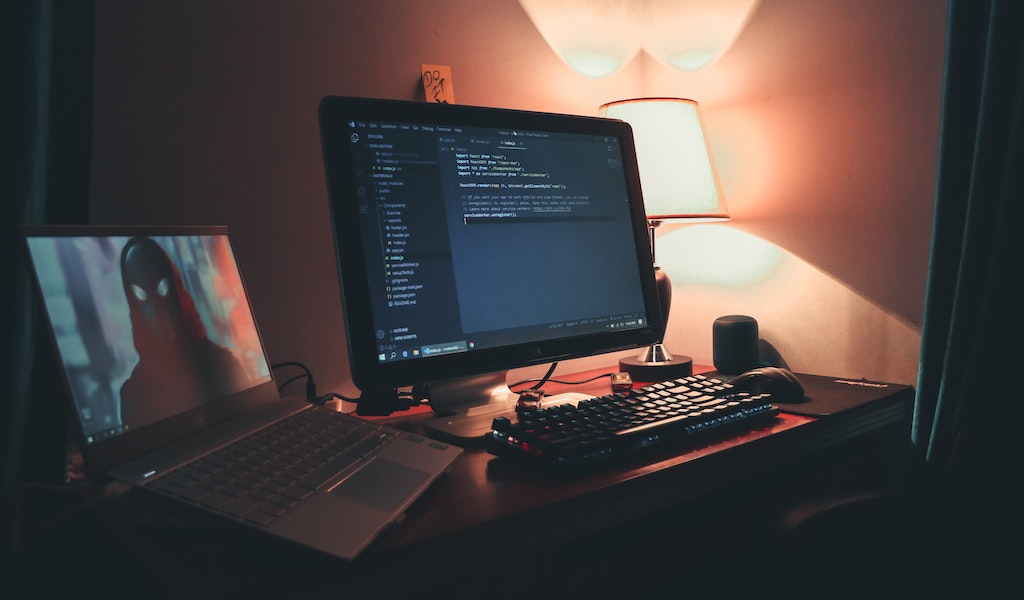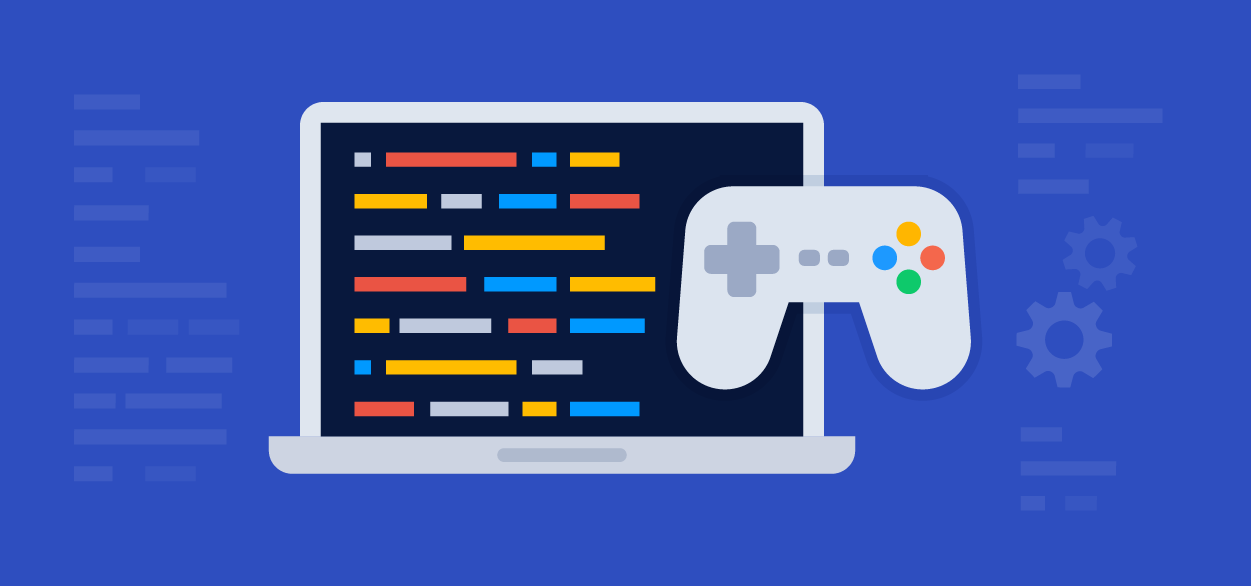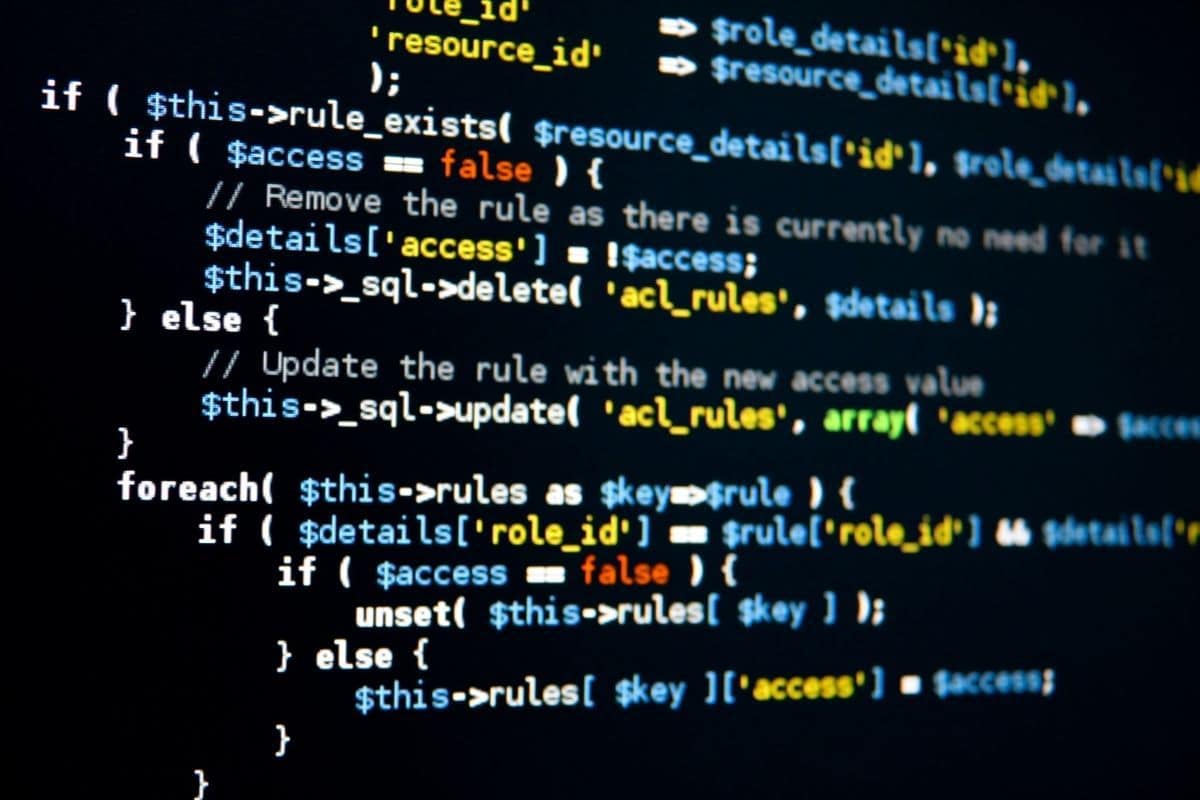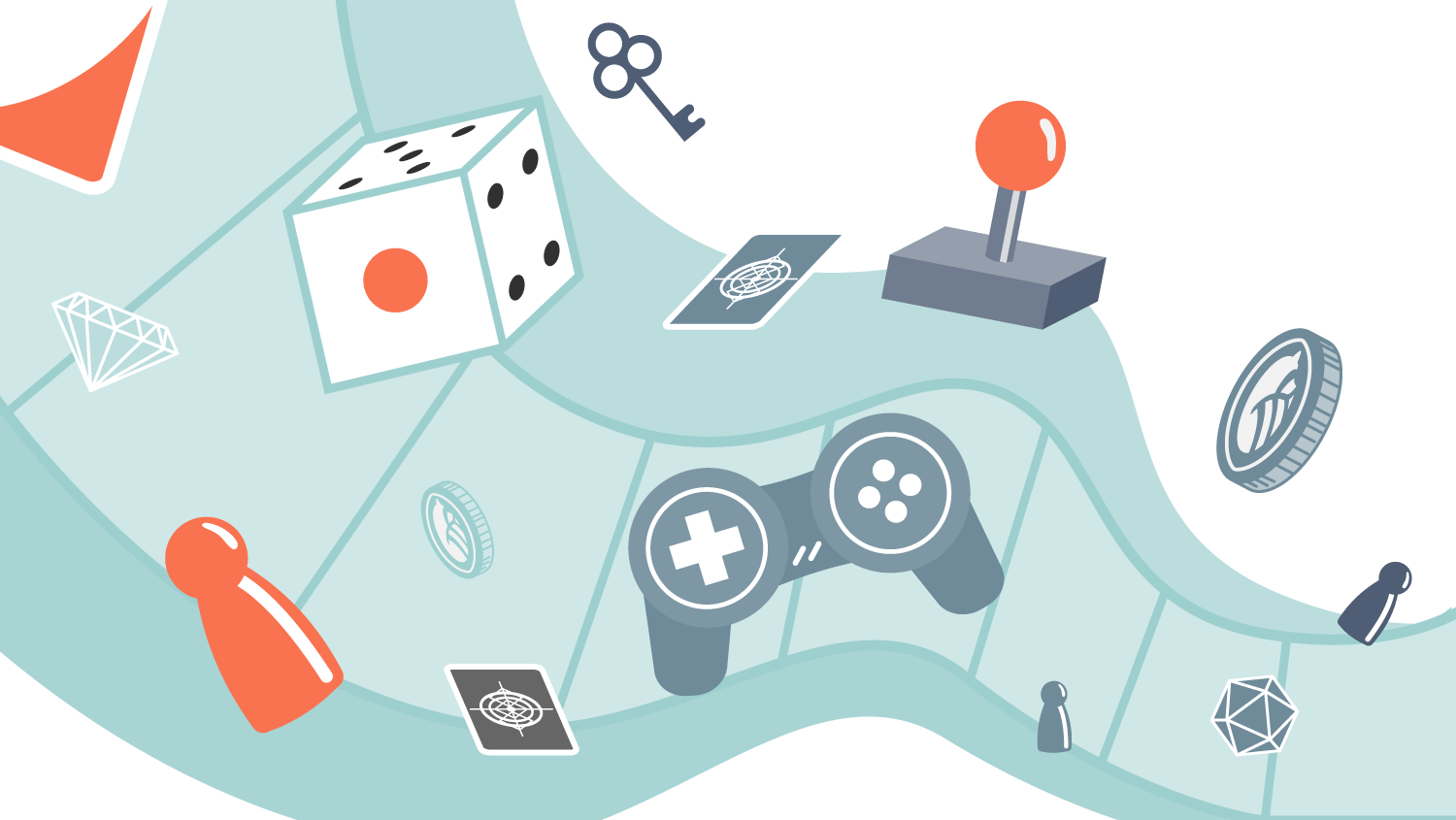Gaming
How To Code A Game: From Choosing Game Engine To Publishing Your Game

How To Code A Game: Are you eager to dive into the world of game development? Have you always wanted to create your own interactive experiences and captivate players with your imaginative worlds?
Look no further! In this comprehensive guide, we will walk you through How to Code a Game from scratch.
Whether you’re a beginner or have some programming experience, this article will provide you with the knowledge and tools to bring your game ideas to life. So, grab your favorite coding editor and let’s get started!
What Is Game Coding?
Game coding refers to the process of creating computer programs that power interactive video games.
It involves writing lines of code that define how game characters and objects behave, respond to user input, and interact with the game environment.
Game coding encompasses various aspects, such as game mechanics, graphics, audio, physics, and artificial intelligence.
By coding a game, you have the opportunity to design and implement unique gameplay experiences tailored to your creative vision.
Why Learn Game Coding?
The world of game development offers endless possibilities for creative expression and innovation. Learning how to code A game opens doors to a range of exciting opportunities:
- Express Your Creativity: Coding your own games allows you to bring your imagination to life and create unique interactive experiences that reflect your creative vision.
- Learn Valuable Skills: Game coding teaches you programming concepts, problem-solving skills, and critical thinking. These skills are transferable and can be applied to various other areas of software development.
- Join a Thriving Industry: The gaming industry is booming, with millions of players worldwide and a constant demand for new and innovative games. Learning game coding can open doors to potential career opportunities in game development studios or as an independent game developer.
- Collaborate and Network: Game development often involves working in teams, collaborating with artists, designers, and sound engineers. By learning game coding, you gain the ability to collaborate effectively and expand your professional network.
- Satisfy Your Curiosity: Game coding is a blend of art and technology, offering a unique challenge for those who are curious about how games work behind the scenes. It allows you to unravel the magic and inner workings of your favorite games.
Choosing a Game Engine
A game engine is a software framework that provides the necessary tools and libraries to streamline the game development process.
It simplifies common tasks such as rendering graphics, handling user input, and managing game assets, allowing you to focus more on the creative aspects of game development. Here are a few popular game engines to consider:
- Unity: Unity is a widely-used game engine that supports both 2D and 3D game development. It offers a user-friendly interface, a vast library of assets, and a strong community for support and resources.
- Unreal Engine: Unreal Engine is known for its stunning visual capabilities and is popular for creating high-quality 3D games. It provides a powerful visual scripting system and a wide range of features and tools.
- Godot: Godot is an open-source game engine that is gaining popularity among indie developers. It offers a unique node-based system for creating game logic and has a lightweight footprint, making it ideal for smaller projects.
When choosing a game engine, consider factors such as your target platform (PC, mobile, console), your level of programming experience, the complexity of your game idea, and the community and resources available for the engine you choose.
Conduct research, experiment with different engines, and choose the one that best suits your needs and preferences.
Setting Up Your Development Environment
Before coding your game, you’ll need to set up your development environment. Here are the steps to get started:
- Choose a Code Editor: Select a code editor that suits your preferences and supports the programming language you’ll be using. Some popular choices include Visual Studio Code, Sublime Text, and Atom. Install the editor and familiarize yourself with its features and shortcuts.
- Install a Programming Language: Depending on your game engine and personal preferences, choose a programming language to write your game code. Common languages for game development include C#, JavaScript, and C++. Install the necessary tools and libraries for your chosen language.
- Install the Game Engine: Download and install the game engine you’ve chosen. Follow the installation instructions provided by the engine’s documentation.
- Set Up Project Structure: Create a new project in your game engine and organize your files and folders according to a logical structure. This will make it easier to navigate and manage your game code as it grows.
Understanding the Basics of Game Development
Before diving into coding, it’s essential to understand the fundamental concepts of game development. Let’s explore some key areas:
Game Loops and Logic
A game loop is the heartbeat of any game. It ensures that the game runs smoothly by repeatedly updating the game state and rendering graphics.
The game logic dictates how game entities behave and interact with each other and the player. It includes handling user input, managing game objects, implementing artificial intelligence, and enforcing game rules.
User Input and Controls
User input allows players to interact with the game. It involves capturing input from devices such as keyboards, mice, and game controllers.
As a game coder, you’ll need to handle input events, interpret them, and translate them into actions within the game.
This includes movement, jumping, attacking, and any other actions specific to your game.
Graphics and Animation
Graphics play a crucial role in creating immersive game worlds. You’ll learn how to render images, animations, and visual effects on the screen.
This involves working with sprites, textures, shaders, and other graphical elements to bring your game to life. Understanding basic concepts like rendering pipelines, cameras, and transformations will be essential.
Audio and Sound Effects
Sound effects and music enhance the overall gaming experience.
You’ll learn how to incorporate audio elements into your game, including playing background music, triggering sound effects, and creating an audio environment that complements the gameplay.
Collision Detection and Physics
Collision detection is vital for determining when game entities intersect or collide with each other. It enables interactions such as object interactions, character-enemy collisions, and environment collisions.
You’ll explore techniques for detecting and resolving collisions and incorporating physics simulations to create realistic movement and interactions.
Game States and Transitions
Games often have different states, such as menus, gameplay, cutscenes, and game over screens. Understanding how to manage these states and smoothly transition between them is crucial.
You’ll learn how to design and implement state machines to control the flow of your game.
Now that you have a grasp of the basics, let’s move on to the coding aspect of game development.
Picking a Programming Language
Choosing the right programming language for your game is an important decision. The programming language will determine how you write your game code and interact with the game engine.
Here are a few popular programming languages used in game development:
- C#: C# is widely used in game development, especially with engines like Unity. It offers a balance between performance and ease of use, making it suitable for both beginners and experienced developers.
- JavaScript: JavaScript is often used for web-based games and mobile game development. It’s a versatile language with a large community and numerous frameworks and libraries available.
- C++: C++ is a powerful and efficient language used in professional game development. It provides low-level control and performance, making it a preferred choice for large-scale projects and AAA game development.
Consider factors such as your familiarity with the language, the game engine’s support for the language, performance requirements, and community resources when selecting a programming language.
Getting Started with Coding
Now that you have your development environment set up and have chosen a programming language, it’s time to dive into coding your game. Here are the initial steps to get started:
Installing Necessary Libraries and Frameworks
Depending on your game engine and programming language, you may need to install additional libraries or frameworks to extend the functionality of your game.
These can include graphics libraries, physics engines, audio libraries, and more. Consult your chosen game engine’s documentation and community resources to identify and install the necessary dependencies.
Setting Up a Project Structure
Organizing your project structure is essential for maintaining a clean and manageable codebase. Create folders for assets, scripts, scenes, and other game components.
This separation will make it easier to find and modify specific elements of your game code.
Creating a Window and Rendering Graphics
In most game engines, creating a window and rendering graphics is handled by the engine itself. You’ll need to learn how to set up a rendering context, create a window, and define the initial graphics settings for your game.
Consult the engine’s documentation and follow the provided tutorials to learn the specific steps for your chosen engine.
Handling User Input
Implementing user input is crucial for enabling player interaction. You’ll need to capture input events such as keyboard presses, mouse movements, and button clicks.
Depending on your game engine, you’ll have access to input handling functions or event systems that allow you to detect and respond to user input.
Use these functions to define your game’s actions and behaviors associated with different input events.
Implementing Game Logic
Game logic defines the rules and behavior of your game. This includes managing game entities, implementing game mechanics, handling game states, and updating the game world based on player input and events.
You’ll write code to control character movement, enemy behavior, game object interactions, scoring systems, and more. Break down your game into smaller components and implement the logic for each part step by step.
Adding Audio and Sound Effects
Audio brings life and immersion to your game. You’ll need to incorporate sound effects, background music, and other audio elements to enhance the player’s experience.
Depending on your game engine, you’ll have access to audio APIs or libraries that allow you to load and play audio files.
Learn how to trigger sound effects at specific events, create soundtracks, and adjust audio settings based on in-game actions.
As you progress with coding your game, keep in mind the importance of efficient code structure, modular design, and code reusability. These practices will make your code easier to maintain and expand as your game evolves.
Designing Game Mechanics
Game mechanics are the rules and systems that govern how your game functions. They define the gameplay, player interactions, and objectives. Here are some key aspects to consider when designing game mechanics:
Character Movement and Controls
Decide how the player character will move and interact with the game world. Will it be a platformer with jumping and running mechanics? Or a top-down shooter with smooth movement?
Implement intuitive and responsive controls, allowing players to navigate and control the character smoothly.
Object Interaction
Think about how objects in your game will interact with each other and the player.
Determine if objects can be picked up, thrown, combined, or used in other ways. Implement code that enables these interactions and creates a sense of depth and interactivity within the game world.
Enemy AI
If your game includes enemies or opponents, consider their behavior and intelligence. Design AI systems that govern enemy movement patterns, decision-making, and combat strategies.
Create challenging and engaging encounters by balancing the difficulty and unpredictability of enemy behavior.
Power-Ups and Collectibles
Power-ups and collectibles add excitement and rewards to the game. Define power-ups that grant special abilities or enhance the player’s performance.
Determine collectibles that provide bonus points, unlock new content, or contribute to the game’s progression.
Write code that handles these elements’ spawning, interaction, and effects.
Level Design and Progression
Create well-designed levels that provide a sense of progression and challenge.
Consider the pacing, difficulty curve, and visual aesthetics of each level. Implement mechanisms for level transitions, checkpoints, and level completion tracking.
Develop tools or file formats that allow you to design and import levels efficiently.
Scoring and Leaderboards
Implement a scoring system that tracks and displays the player’s performance.
Determine how scores are calculated based on time, collected items, or other criteria. Consider integrating online leaderboards to encourage competition among players.
Testing and Debugging Your Game
Testing and debugging are crucial steps in game development to ensure a smooth and bug-free experience for players. Here are some essential techniques:
Unit Testing
Write unit tests to verify the functionality of individual components or modules of your game. Test specific functions, classes, or systems to ensure they behave as expected.
Use testing frameworks and tools specific to your programming language to automate the testing process.
Integration Testing
Perform integration testing to check the interaction and compatibility between different game systems. Test how various components work together and ensure that they integrate seamlessly.
Gameplay Testing
Conduct gameplay testing to evaluate the overall player experience. Playtest your game extensively to identify any gameplay issues, bugs, or design flaws.
Gather feedback from testers and make necessary adjustments to improve the gameplay flow, difficulty balance, and user satisfaction.
Bug Tracking and Debugging
During testing, keep a detailed record of any bugs or issues that arise. Use bug tracking tools or systems to document and prioritize the identified issues.
Debug the code by using breakpoints, logging, and error handling techniques to trace and fix the problems.
Performance Optimization
Optimize your game’s performance to ensure smooth gameplay on target platforms. Identify any bottlenecks, memory leaks, or performance issues through profiling tools and techniques.
Optimize resource usage, reduce unnecessary computations, and employ efficient algorithms to enhance the overall performance of your game.
Conclusion
Learning how to code a game opens up exciting possibilities for creativity, career opportunities, and personal growth.
With the right tools, resources, and dedication, you can bring your game ideas to life and embark on an immersive journey into the world of game development.
By understanding the core concepts of game coding, such as handling user input, implementing game logic, designing game mechanics, and testing your game, you’ll be well-equipped to create engaging and enjoyable experiences for players.
Remember, game coding is a continuous learning process. Embrace challenges, seek out new techniques and technologies, and never stop exploring.
As you gain experience and expand your skill set, you’ll be able to tackle more ambitious game projects and bring your creative visions to fruition.
So, roll up your sleeves, fire up your favorite game engine, and start coding your dream game.
With dedication, perseverance, and a passion for gaming, you’ll be well on your way to creating immersive worlds and captivating experiences that will leave players eager for more.
RELATED CTN NEWS:
How To Start Coding: A Beginner’s Guide To Programming

































